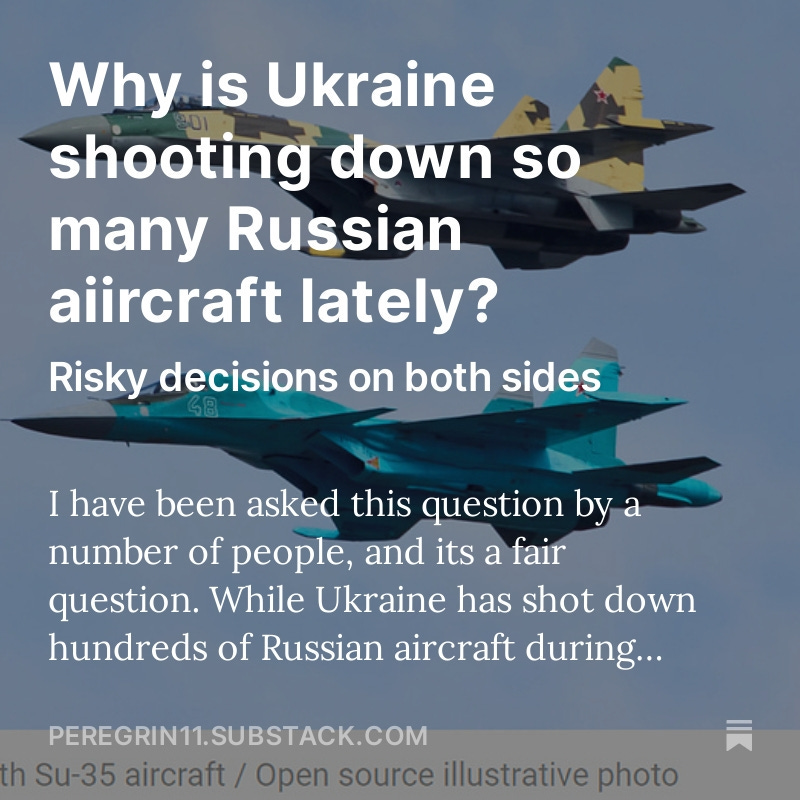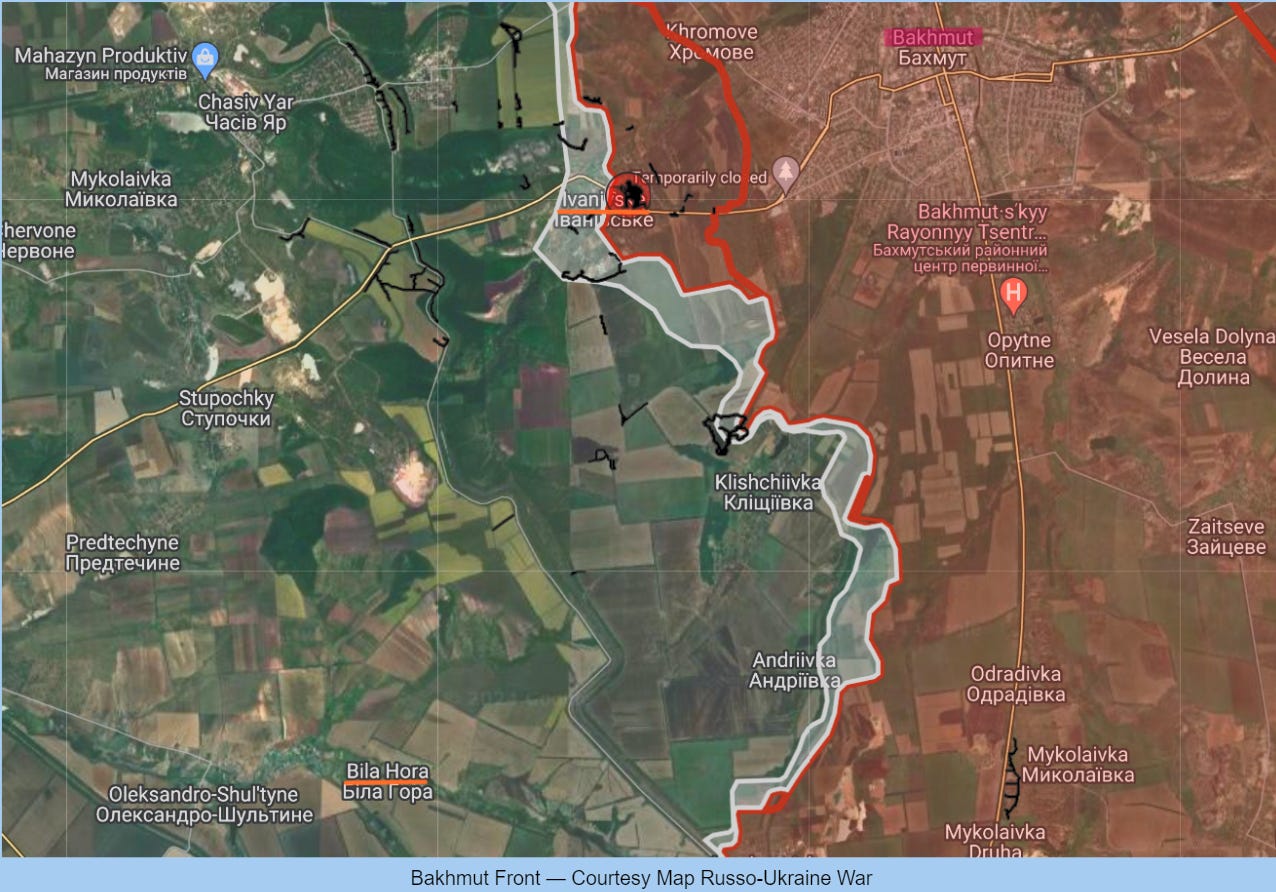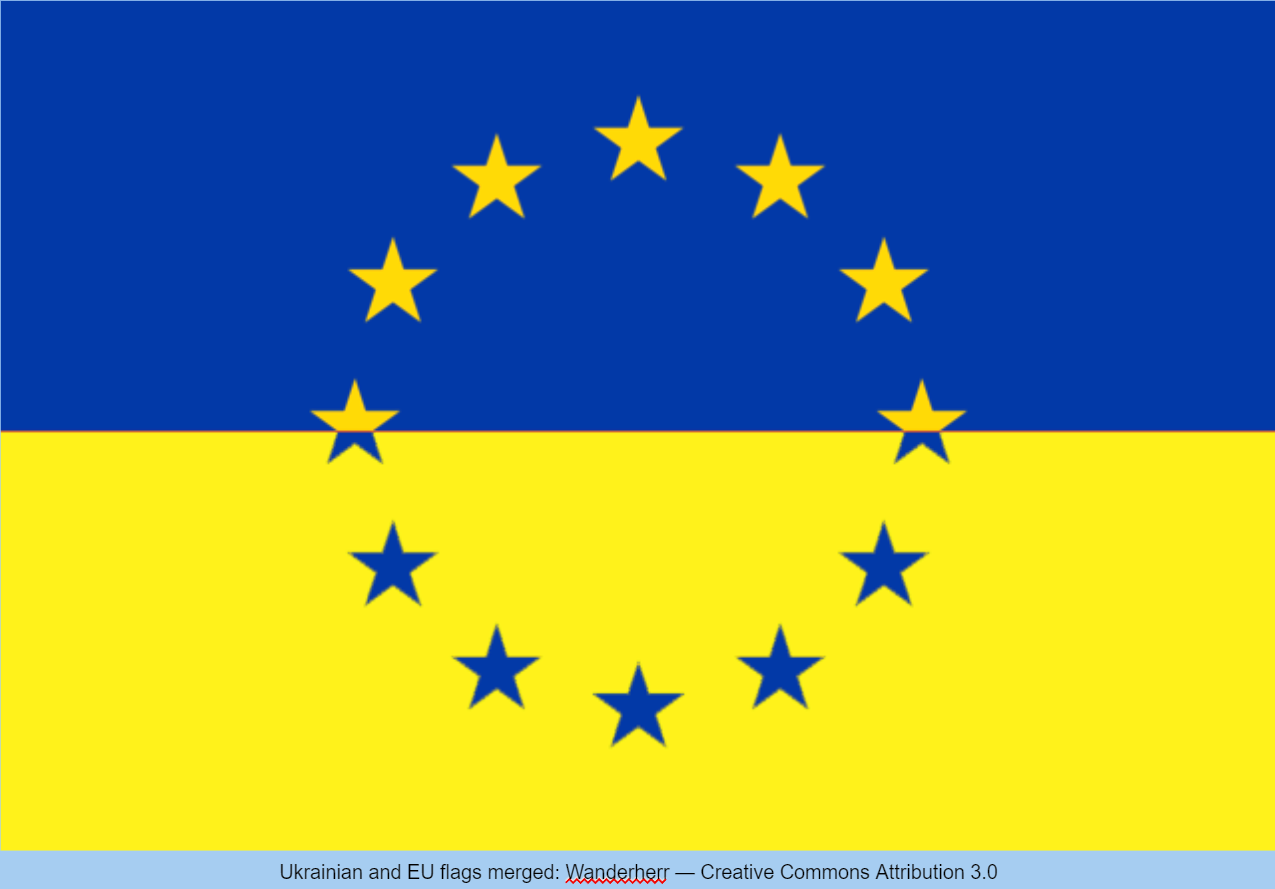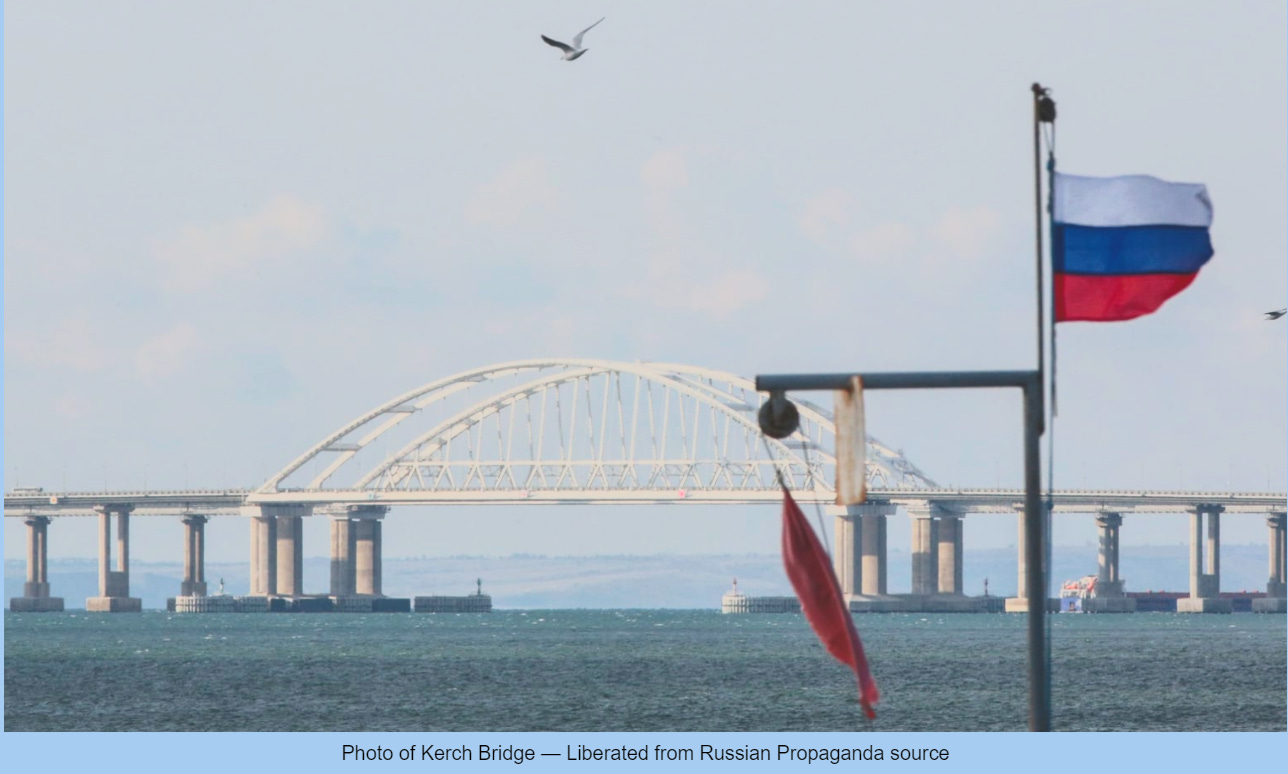Slava Ukraini! Since June 2023 I have provided a daily draft for the Ukraine War Brief Podcast collecting news from over 40 sources daily much of which ends up in the script. I will make this Draft available here for those who wish to keep up with events on a daily basis.
INSIDE UKRAINE
ALONG THE CONTACT LINE
GSAFU Morning Report
The General Staff of the Armed Forces of Ukraine in its situation update at 06:00 on Mar. 6 stated that it was day 742 of the full-scale invasion of the Russian Federation against Ukraine.
During the past day, 86 combat engagements took place. Over the past 24 hours, the enemy carried out 4 missile strikes, 106 air strikes, and 154 MLRS attacks across the positions of our troops and settlements. As a result of the Russian attacks, unfortunately, there are dead and wounded among the civilian population. Destruction and damage to residential buildings and other civilian infrastructure.
At the same time, Ukrainian soldiers continue to inflict losses in manpower and equipment on the occupying troops, exhausting the enemy along the entire front line.
During the day of March 5, the Ukrainian Air Force launched air strikes on 11 concentrations of enemy troops.
Ukrainian missile forces hit 2 command posts, 1 concentration of troops, weapons, and military equipment, 1 ammunition depot, 1 Buk-M1 anti-aircraft missile systems, and 1 Zoopark-1 counter-battery radar system of the russian invaders.
Russians willing to lose aircraft in order to advance
The Institute for the Study of War (ISW) in its Mar. 5 Russian Offensive Campaign Assessment stated that Russian aircraft appear to be continuing to conduct a relatively high volume of glide bomb strikes in Ukraine despite Ukrainian officials’ reports that Ukrainian forces have downed several bomber aircraft in recent weeks.
Forbes reported on Mar. 4 that Russian Su-34 aircraft, escorted by Su-35 aircraft, are conducting one hundred or more sorties per day to conduct glide bomb strikes on Ukrainian positions at a range of 25 miles (about 40 kilometers).
The New York Times reported on March 5 that Russian tactics are shifting to intensify operations in the air domain and that Russian forces’ “more aggressive” air support on the front lines has helped Russian forces to advance recently in eastern Ukraine.
These reports suggest that the Russian Air Force is maintaining a high tempo of fixed-wing air missions in Ukraine and is possibly willing to tolerate risks to fixed-wing aircraft, likely because the Russian command may have decided that the positive effects generated by such air operations outweigh the costs associated with flying such missions. Russian forces used glide bomb strikes to tactical effect in their seizure of Avdiivka in mid-February and are likely attempting to replicate such effects to support ongoing offensive operations elsewhere on the front. ISW cannot independently verify Ukrainian reports of the shootdowns of several Su-34 aircraft in recent weeks.
Grumpy Here - Let’s take a look at the latest data. The GSAFU in its morning report listed 717 airstrikes by the Russian Federation Air Force (VVS) last week from Monday Feb. 26 to Friday Mar.1. Averaging 143 airstrikes per day over the 5 day period, somewhat higher than the Forbes article claimed.
Since that time From Saturday Mar. 2 up to and including Tuesday Mar. 5 there have been a grand total of 272 airstrikes over that 4 day period, which works out to an average of 68 airstrikes per day.
It seems more than reasonable to infer that the losses reportedly inflicted by Ukraine on the VVS has resulted in an over 50% reduction in airstrikes across the front.
Yesterday I released a stand alone article on why it was that Ukraine had shot down so high value VVS aircraft lately and how the punishing rate of aircraft losses had, for the time being at least resulted in a considerable reduction in sorties by the VVS.
The Khortytsia operational-strategic group
(Responsible for the Kup’yans’k, Lyman, and Bakhmut axes, in the northeastern part of Ukraine. )
Kup’yans’k axis: The enemy did not conduct any offensive (assault) operations in this area.
Lyman axis: Ukrainian defenders repelled 6 attacks near Terny and Verkhn’okam’yans’ke (Donetsk oblast)
Bakhmut axis: Ukrainian forces repelled 2 attacks near Ivanivske and Bila Hora (Donetsk oblast)
The Tavria operational-strategic group
(Responsible for the Avdiivka, Mar’inka, Shaktars’ke, and Orikhiv axes, in the central-eastern and southeastern part of Ukraine.)
Avdiivka axis: Ukrainian Defense Forces repelled 23 enemy attacks near Berdychi, Semenivka, Orlivka, Tonen’ke, Vodyane, Pervomais’ke and Nevel’s’ke (Donetsk oblast).
Novopavlivka axis: Ukrainian Defense Forces continue to hold back the occupiers in the vicinities of Krasnohorivka Heorhiivka, and Novomvahkilivka (Donetsk oblast). Troops repelled 39 attacks in that area.
Orikhiv axis: Ukrainian Defense Forces repelled 5 attacks near Robotyne, Hulyaipole and Malynivka (Zaporizhzhia oblast).
The Odesa operational-strategic group
(Responsible for Kherson, Qırım, (also known as Crimea) and the Black Sea.)
Kherson axis: Ukrainian defenders continue to maintain their positions. Over the past day, the enemy carried out 3 unsuccessful assaults on the positions of the Ukrainian Defense Forces on the left bank of the Dnipro River.
27 Russians wounded and 7 killed in sinking of Sergei Kotov
The Defence IntIntelligence of Ukraine (HUR) reported that based on initial data available, at least 27 crew members were wounded and 7 more killed during the sinking of the Russian Corvette Sergei Kotov that took place in the early morning of Mar. 5.
UK intelligence analyses Russian losses in Black Sea over past five weeks
The UK Ministry of Defence in their Mar. 6 Intelligence Update analysed Russia's losses in the Black Sea over the past five weeks amid the recent sinking of the Russian patrol boat Sergei Kotov in the region.
The UK MoD noted that the Sergei Kotov had been sunk in an attack by Ukraine's Defence Intelligence involving Magura V5 uncrewed surface vessels (USVs).
They indicated that these drones also attacked the Russian landing ship Tsezar Kunikov on 14 February.
The Sergei Kotov had only been commissioned into Russia's Black Sea Fleet in July 2022. It had previously been targeted by USV attacks in July and September 2023, sustaining minor damage and returning to port shortly after both incidents.
"This is the third Russian Black Sea Fleet vessel sunk in the past five weeks. Likely because of Black Sea Fleet losses, on 15 February 2024, the Black Sea Fleet Commander, Admiral Viktor Sokolov, was dismissed," the UK MoD said.
UK Defence Intelligence added that Ukraine continues to restrict the fleet’s freedom to manoeuvre around the Black Sea.
Photo of Magura V5 uncrewed surface vessels (USVs) — Courtesy The Odesa Journal
TEMPORARILY OCCUPIED TERRITORIES
Nothing to report.
THE HOME FRONT
Government highlights benefits for Ukraine from new EU defence and industrial strategy
The integration and support of the Ukrainian defence industry has become one of the goals of the European Defence Industrial Strategy (EDIS), which was presented in Brussels on 5 March. The Ministry of Strategic Industries reports
During the development of the document, consultations were held with the relevant Ukrainian agencies on the Ukrainian experience of defence and protection against Russia's armed aggression, as well as the Ukrainian vision of the development of the European and Ukrainian defence industry.
The Ministry of Strategic Industries submitted its proposals, which were partially taken into account by the European Commission.
The strategy proposes that the Ukrainian industry could participate in the EU's defence industry support programme. Ukraine will be able to participate in joint procurement of weapons, and Ukrainian defence companies will be supported in building capacity and cooperation with the European industry.
It is also about stimulating cooperation between Ukrainian and European industries and exchanging information on standards and experience.
To strengthen cooperation, the EU will host the EU-Ukraine Defence Industry Forum in 2024.
RUSSIAN WORLD
UAV attacks plant in Russia's Kursk Oblast for second time this morning
A drone has struck a mining and processing plant (MPP) in Russia's Kursk Oblast for the second time on the morning of 6 March. Ukrainsk Pravda reported citing a source in Defence Intelligence of Ukraine (HUR) has stated it was an operation by Ukrainian intelligence.
Russian Telegram channel 112 reported at around 10:10 that a UAV had just struck the Mikhailovsky Varichev MPP in the city of Zheleznogorsk once again.
Varichev MPP is one of the largest iron ore mining and processing firms in Russia and the Commonwealth of Independent States.
WORLD NEWS
Turkish oil terminal halts Russian oil business
One of Turkey's mid-sized Mediterranean oil terminals - the Dortyol terminal - will no longer accept Russian imports after receiving record volumes last year, amid an increase in sanctions pressure by the United States. Reuters reported.
Turkey has become one of the biggest importers of Russian crude and fuel since 2022, after the West imposed sanctions on Moscow for the invasion of Ukraine. Russia responded by re-routing oil away from Europe and the U.S. to Asia, Turkey and Africa.
Global Terminal Services' (GTS), which operates the terminal in Turkey's southeastern Hatay province, said it had told its clients it would not accept any products from Russia.
"GTS decided to cut all possible connections to Russian oil and declared accordingly to its customers in late February 2024 that even if there is no breach of any laws, regulations or sanctions, it would not accept any product of Russian origin or any products loaded from Russian ports as an additional measure to the sanction rules in effect," GTS told Reuters.
Ankara opposes Western sanctions on Moscow, despite criticising Russia's invasion of Ukraine two years ago. It has managed to maintain close ties with both Moscow and Kyiv throughout the conflict.
Ukraine willing to accept restrictions on EU trade to end dispute with Poland but urges ban on Russian grain imports
Ukraine is prepared to accept restrictions on its trade with the EU to defuse a bitter political dispute with Poland, but is also urging the bloc to ban Russian grain imports, the Ukrainian trade minister has said.The Financial Times reports.
Taras Kachka told the Financial Times that Kyiv was in favour of new curbs on Ukrainian agricultural imports, although the EU also needed to ban Russian farm exports that are still reaching the bloc via Belarus and the Baltics.
“Maybe for a transitional period this kind of . . . managed approach to trade flows between Ukraine and the EU is something that we all need,” Kachka said. But he added: “For wheat, it is not Ukraine that is causing problems for Polish farmers, it is Russia.” Kachka said.
Continued protests in recent weeks have pressured Polish Prime Minister Donald Tusk to seek exemptions from Brussels and carry on with the restrictions.
“We need to find a solution that will effectively protect the Polish and European markets against unequal competition,” Tusk said on Monday during a visit to Lithuania.
He agreed with the Ukrainian minister on the need to ban agricultural imports from Russia and Belarus, a measure that would be backed by Lithuania, said the country’s Prime Minister Ingrida Šimonytė. Tusk said restrictions at the level of the entire bloc would be more efficient, after Latvia recently imposed a countrywide ban on Russian imports. Tusk said.
Ukraine Is Now Fighting Russia in Sudan
In fighting against Russian-backed rebels in Sudan, Ukraine hopes to make the war more costly for Moscow, The Wall Street Journal reported.
When Lt. Gen. Abdel Fattah al-Burhan, Sudan’s military ruler, found himself besieged by rebel forces in the country’s capital last summer, he called an unlikely ally for help: Ukrainian President Volodymyr Zelensky.
Zelensky had reasons to take the request seriously: Burhan had been quietly supplying Kyiv with weapons since shortly after Russia invaded Ukraine in 2022, according to Ukrainian and Sudanese military officials. In addition, the Sudanese rebels were backed by Russia’s Wagner paramilitary group, which has also mined gold in the country and used it to fund Moscow’s war in Ukraine.
Within a few weeks of the call, Ukrainian commandos landed in Sudan and began fighting to push the rebel forces out of the capital, Khartoum, according to several Ukrainian soldiers involved in the operation.
The front line in the war between Ukraine and Russia now extends into Africa.
With fighting in Ukraine at a near stalemate, a global battle over weapons and economic resources is taking shape, as both sides dig in for a war that could last many more years.
For Ukraine, sending troops to Africa is an audacious new venture—part of a strategy to disrupt Russia’s military and economic operations abroad, make the war more costly for Moscow, and position itself as a bulwark against Russian incursions, including in regions where the West has been reluctant to get directly involved.
In an interview, Lt. Gen. Kyrylo Budanov, who leads Ukraine’s military intelligence agency, known as HUR, declined to comment on whether he had deployed troops to Sudan but outlined the rationale for sending Ukrainian forces abroad.
“War is a risky business,” Budanov said. “We are in a full-fledged war with Russia…They have units in different parts of the world, and we sometimes try to strike them there.”
Taurus leak reveals Germany’s dilemma as Europe awakens to new security reality
On Mar.1 Russian propaganda queen Margarita Simonyan shared a leak of German military officials discussing the possible delivery of Taurus missiles to Ukraine and their potential use to strike the Crimean Bridge.
The German Taurus leaks shed light not only on the technical details of a possible Taurus strike on the Crimean bridge, but Europe’s shifting security landscape, as France and Germany compete for leadership amid evolving US priorities and the urgent need to support Ukraine’s defence.
Ukraine has been seeking Taurus missiles for close to a year now and German Chancellor Scholz’s stonewalling arguments for withholding the missiles seem increasingly bizarre.
His own officers in the leak refute one of his claims - That German troops would be necessary on the ground in Ukraine to launch the missiles.
They also attempt to navigate the “red lines” that Scholz maintains — avoiding “involvement” in the war in terms of planning operations, despite supplying weapons.
One of Scholz other claims – That there are fears that Ukraine might use them to strike Moscow is ridiculous, The Taurus does not even have close to the range to reach Moscow.
What this intercept does reveal about the Taurus, is that these are indeed the weapons that could take down Ukraine’s Target Number One — the Kerch Bridge that links Qirim with mainland Russia.
Therein lies the rub. Ukraine has already crippled the Russian Black Sea Fleet, taking out the Kerch Bridge would make it impossible for Russia to hold Qirim, without Qirim Russia would have to abandon its positions in Kherson and Zaporizhzhia with that the war would basically be lost for Putin, which could lead to an unacceptable level of uncertainty for some in the west regarding what comes next.
Macron says Ukraine’s allies must not be cowards, rise up to historic challenge
In a speech delivered in Czechia on 5 March, French President Emmanuel Macron called on Ukraine’s allies “not to be cowards” in supporting the country’s fight against Russian aggression. Facing the raging Russo-Ukrainian war, he urged them not to falter and to show courage equal to the historic challenges posed by the conflict. Euromaidan Press reported.
“War has once again reached our land, and relentless forces are expanding their threat, launching increasingly frequent attacks against us. We must rise to the challenge posed by history and the courage it demands. One never wants to see the dramas that are coming and what is at stake.“
— Emmanuel Macron, President of France
Later after meeting with Czech leader Petr Pavel Marcon said “Is this or is it not our war? Can we look away in the belief that we can let things run their course? I don’t believe so, and therefore I called for a strategic surge, and I fully stand behind that.”
MILITARY & TECH
Ukraine's Security Service shows testing of new surface drone called “Avdiivka”
The Security Service of Ukraine (HUR) has shown the first surface drone, which was manufactured thanks to a large-scale volunteer fundraiser. The Press Service of the Security Service of Ukraine reported.
The first sample in this batch, which the Security Service of Ukraine showed during testing, is called “Avdiivka”. It differs from the previous generation, specifically in appearance. Sea Baby 2024 is a new generation drone, which is improved and even more deadly for the enemy."
"The future belongs to technological approaches in warfare. Today, the Security Service of Ukraine is trying to be the first in this niche, and it is really succeeding. In the ranks of the Service, we have trained unique specialists in surface drones to further improve and scale the work on clearing the Black Sea from the enemy. Our task is to destroy the occupiers and bring the victory closer."
— Vasyl Maliuk, Head if the Security Service of Ukraine
The new Sea Baby 2024 has improved technical, combat and manoeuvrability characteristics. It is capable of delivering almost a tonne of explosives over a distance of over 1,000 kilometres. The Security Service created the drone as a versatile platform that can carry a variety of weapons.
That’s it for today’s Draft folks if you would like to keep up with events in Ukraine daily please consider subscribing, its free!
Feel free to share this update with your friends. Heroyam Slava!























